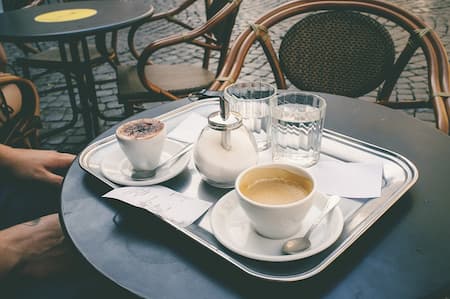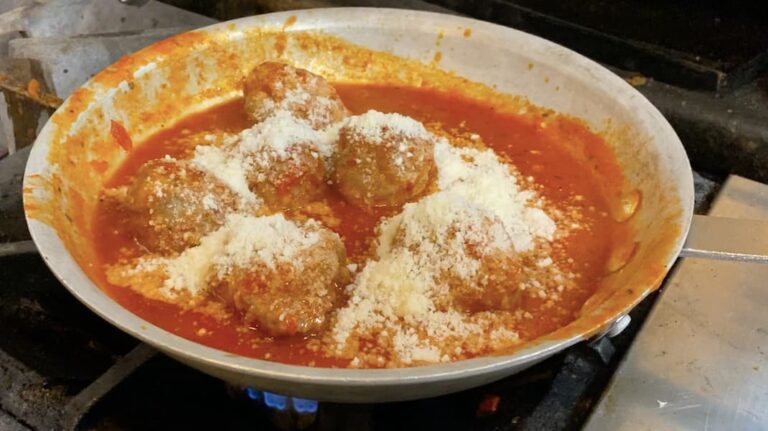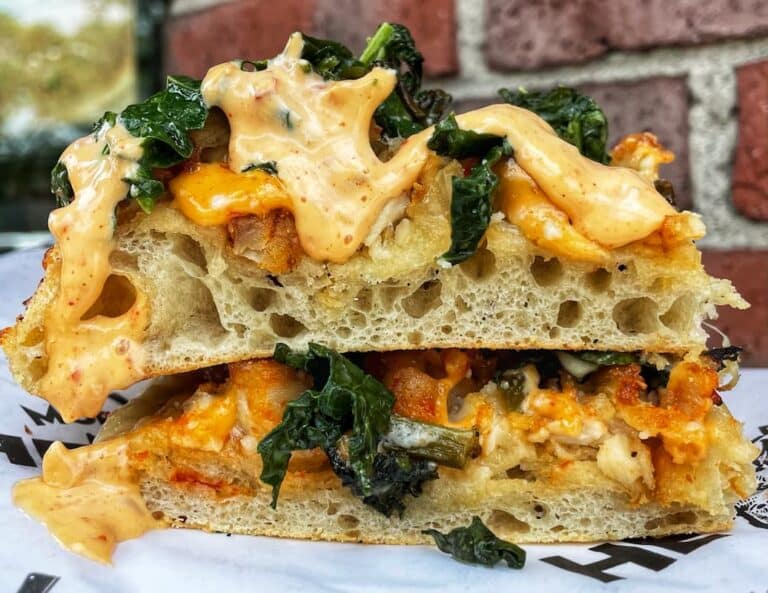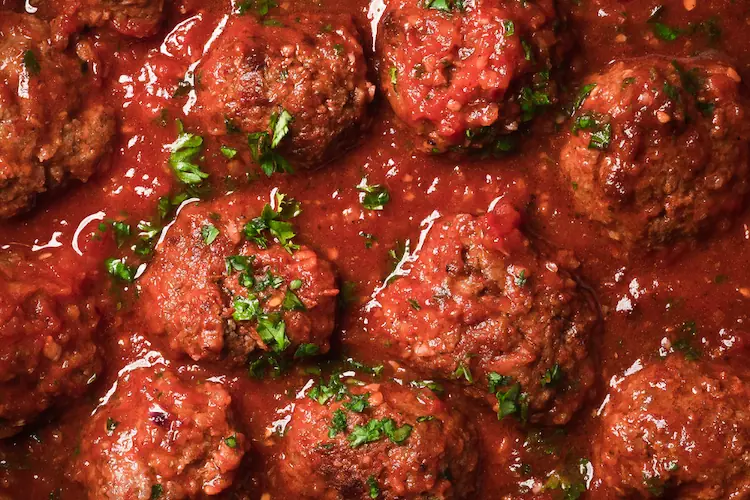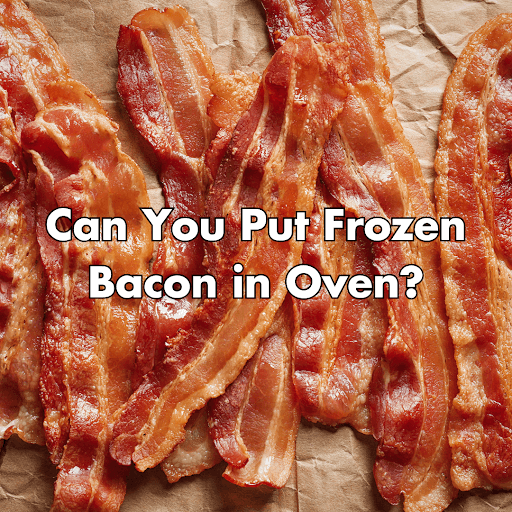It is euphemistic to say that we Italians like coffee quite a lot.
We have a rich coffee culture dating back centuries, and some of the most famous coffee drinks in the world come from here. From the classic espresso to the creamy cappuccino, these drinks are not only delicious but also an integral part of daily life for many of us. In this article, we’ll take a look at the most famous coffee drinks in Italy and what makes them so special.
The most popular types of coffee in Italy and their variants
1. Espresso
Caffè espresso is the base of all Italian coffee drinks, and also our default way of having coffee outside of home. When someone asks for “un caffè” in an Italian bar, it means they want an espresso.
Its name means “made out of pressure“. This is because it is obtained by forcing hot water through finely-ground coffee beans under high pressure. That’s the secret of mochas and espresso machines. The result is a strong, concentrated coffee with a rich, full-bodied flavor.
Espresso is much stronger than coffee drinks made by infusion or with a French press. For this, it is usually served in a small cup. If you need an extra boost, you can ask for a double espresso (or caffè doppio). As the name suggests, it’s a double shot of espresso, usually served in a cappuccino cup.
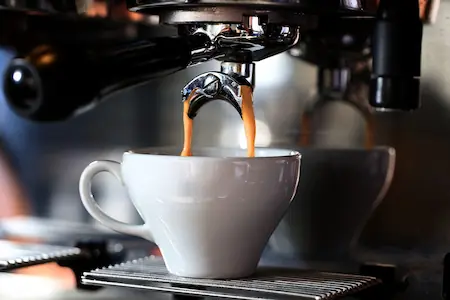
Main variants of espresso
Aside from being used as a base for other types of Italian coffees, espresso can also be made in a few different ways, depending on how you want it.
Decaffeinato: a decaffeinated version of espresso, made with coffee beans that have had most of their caffeine removed. It is perfect for people who want to enjoy the flavor of coffee without the stimulating effects of caffeine.
Caffè Ristretto: a stronger, more concentrated version of espresso. It is made by using the same amount of coffee grains, but less water. This results in a shorter extraction time and a bolder, more intense flavor. Ristretto is often enjoyed as an after-dinner drink and is said to have a sweeter taste than regular espresso.
Caffè Lungo: aka “long coffee”. Contrary to caffè ristretto, this variation of espresso uses more water to create a larger, milder drink. The result is a less intense, more balanced flavor that is perfect for those who want a less strong coffee.
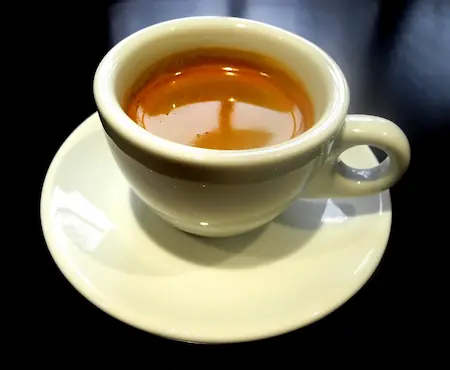
2. Moka coffee
I put it here separately from espresso because technically these two are not the same type of coffee.
Certainly, you have seen a moka before. Or “mocha,” as it is spelled in English. It’s that stovetop coffee maker you see in any Italian household. It was invented in 1933 and quickly replaced the Neapolitan coffee maker as Italy’s preferred tool for making coffee at home.
Like espresso machines, a moka makes coffee through high pressure. However, it usually does not reach the bars needed to create the typical espresso cream (usually 8 to 10). As a result, mocha coffee is less strong and dense than the espresso you would get at a bar. It also has a darker color, due to the lack of the cream mentioned above.
It can be said that while espresso is the default way of having coffee outside, mocha coffee is the traditional way of having it at home.
Many people like to manually create an espresso-like cream when they are at home. It is made by taking one or two teaspoons of freshly brewed coffee, and beating them with three times the amount of sugar. If you decide to try it at home, check your mocha and be sure to use only the first few drops of coffee it makes. They are much more concentrated than the coffee that comes out at the end of the process and will allow you to get a thicker cream.
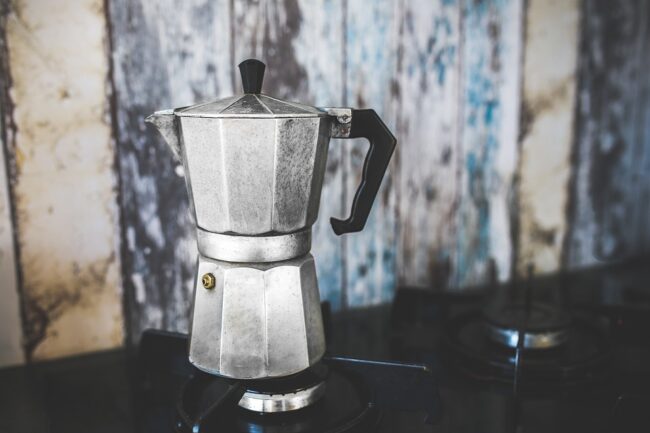
3. Caffè d’orzo
Not technically a coffee drink, as it is made with toasted barley beans. However, it is called like that because it is made with moka pots and espresso machines.
It originated during WWII because it was cheaper than regular coffee. And after that, many Italians kept drinking it because it was a valid caffeine-free alternative before decaffeinated coffee entered the market. Now it is still appreciated for its mild flavor and health benefits.
4. Caffè Corretto
Caffè Corretto, or “corrected coffee,” is a popular drink that combines espresso with a shot of liquor, usually grappa or sambuca. The added alcohol gives the coffee a unique and slightly stronger flavor and is often enjoyed as an after-dinner drink.
The first caffè corretto originated in Northern Italy, but now it has lots of regional variants throughout the nation. In my region, for instance, there’s a famous version called Moretta di Fano (from the name of its city of birth), which is made with anisette, brandy or cognac, and rum. In other parts of the region, it is often made with Varnelli liqueur, and it gave birth to a local coffee drink called Lu Cazolà.
5. Cappuccino & Mocaccino
Cappuccino is another classic Italian coffee drink made with espresso and steamed milk. It’s kinda the king of coffee milky drinks. The steaming process turns the milk into a smooth foam that balances the strong flavor of espresso. The result is a creamy warm drink that is perfect for breakfast or as an afternoon pick-me-up.
You don’t need to sweeten your cappuccino, as the milk already takes all the bitterness out of espresso. However, when I’m feeling particularly in the mood for sweet drinks, I like to add a thin dusting of brown sugar to the top of the milk foam.
If, on the other hand, you’d like it to have a chocolatey flavor, you could add some chocolate syrup and dust the milk foam with cocoa powder. In that case, it becomes a mocaccino.
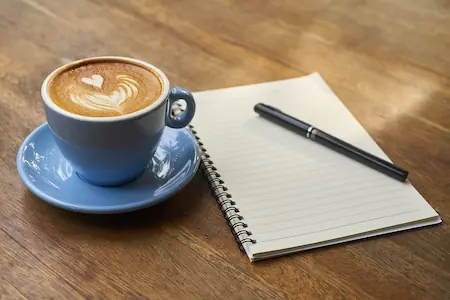
6. Macchiato
Caffè macchiato is like a baby cappuccino. It is served in an espresso cup and is simply coffee with a small amount of milk added to it. Like for cappuccino, this gives it a slightly sweeter taste and a more balanced flavor.
Its name means “stained” in Italian, and it refers to the white spot that is formed by the milk on top of the drink.
There are actually two versions of this drink. Macchiato caldo, which is made with hot milk foam, and macchiato freddo, which is usually just espresso diluted with cold milk. In bars, the milk is usually served to the side in a small portion, so that you can decide how much to add. Some even leave small jugs of milk on the counter, so that customers can serve themselves.
Like cappuccino, caffè macchiato is usually considered a breakfast drink, although it can be enjoyed all through the day.
I find it the perfect way to start the day on a good note. I like it especially during winter mornings. You know those days when it’s cold outside and you wish you could just stay in bed? On those occasions, a cappuccino or a macchiato is like a warm cuddle before heading to work.
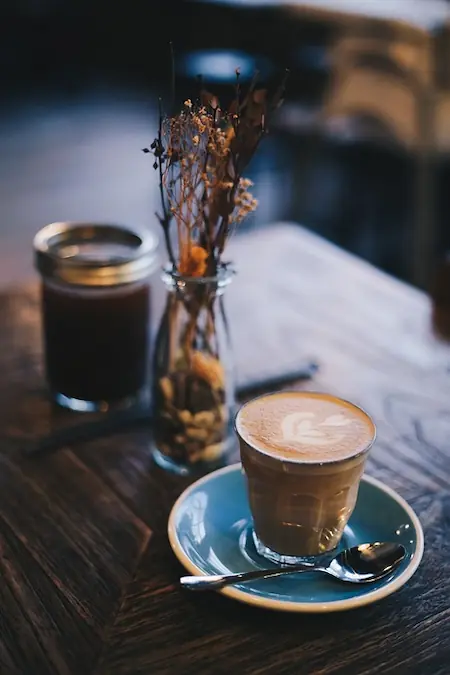
7. Marocchino
This one looks very much like a smaller variant of mocaccino. However, it actually originated from another drink, so the analogy is not historically correct. It describes it quite well, though. The original marocchino was made with espresso, milk foam, and cocoa powder. Nowadays, it’s very common to add chocolate syrup, dark chocolate flakes, or Nutella.
8. Latte macchiato
This is what people in America often refer to as just latte.
This coffee drink is similar to cappuccino, but with more milk. In fact, milk is the main ingredient here: it is present both in liquid form and as a foam. Coffee is just a stain in its warm embrace, hence the name – which means “stained milk”. This drink has a mild, creamy taste, making it perfect for those who prefer a sweeter coffee, or would like their milk to have an extra kick.
If you come to Italy and want to order this drink at a bar, make sure you use its complete name, or you’ll probably get just a big hot cup of milk. If you paid attention, you probably already understood the reason. Latte is our word for milk. If you say just that, the bartender won’t assume that you want coffee in your drink as well.
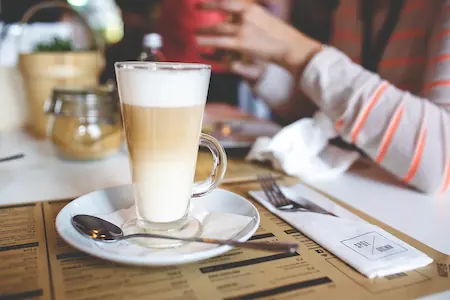
9. Caffè Latte
It’s similar to latte macchiato, but it doesn’t have milk foam, and this time there’s a little more coffee. I know, the difference is very thin. In fact, many people use the two terms interchangeably.
10. Caffè Americano
Caffè Americano is a drink made with two shots of expresso and hot water, served in a big cup. Legend has it that it was first invented by the American soldiers in Rome during WWII, who used to dilute their espresso with water to make it more similar to the coffee they were used to.
It is also what we call the regular coffee that you would get in US coffee shops. However, since most bars here don’t have infusion coffee makers, if you order an americano you’re likely to get the espresso version.
11. Caffè shakerato
This is an alcoholic coffee drink made with espresso, vanilla liqueur, and ice cubes. It is also known as Shaken Iced Coffee.
It is mostly suited for parties or aperitivos.
Bonus: Tiramisu Martini
Technically, this is *NOT* a typical Italian coffee drink. However, it is made with espresso and it is based on one of our most famous desserts, so I added it anyway.
Tiramisu martini is made with coffee liqueur, vodka or rum, heavy cream, chocolate syrup, and ice cubes. If you want to try it at home, I wrote a recipe along with a few possible variations in a more comprehensive post.
International honor mention: Caffè al ginseng
This is also not a traditional Italian coffee drink, as it was imported in the early 2000s. However, it’s now being made in most Italian bars, and many people love it. If you ask me, it’s another perfect way to start the day.
This type of coffee is made by mixing coffee with ginseng powder. Here in Italy, it’s made with premade blends using the same automatic machines that make caffè d’orzo. It is served in small glass cups with a dusting of sugar on the bottom, and is similar to caffè macchiato in sweetness and texture.
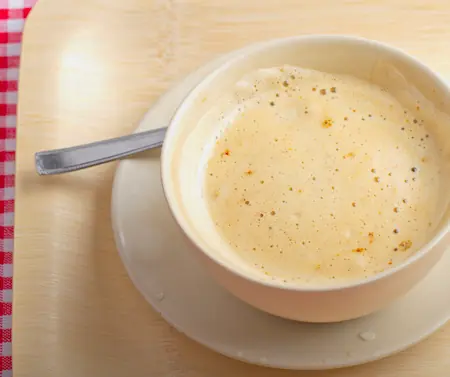
Is it spelled caffè or caffé?
In Italian, the letters è and é have different sounds. The first one is open, while the other is closed. Even native speakers get confused sometimes, so it can happen to see things like “caffé corretto“, “caffé macchiato” or “caffé latte” in menus.
However, the right spelling is caffè, with a grave accent, as the E is open.
What are the best Italian coffee brands?
If you’d like to try some Italian coffee brands at home, here are some names to look for at the grocery store:
- Caffè Vergnano. This might actually be a bit tricky to find, but it’s the oldest among big Italian coffee brands, so I had to list it.
- Lavazza, another old big producer from Turin. In my experience, this is the easiest brand to find in stores outside of Italy.
- Kimbo, from Naples.
- Caffè Borbone;
- Illy;
- Segafredo.
These are the top Italian coffee brands. Some of them are made with 100% arabica beans. Others are a blend of arabica and robusta beans.
The difference between the two can be roughly described this way: while arabica beans have a richer aromatic profile, robusta beans have higher levels of caffeine and are a little bitter. Many Italians seem to assume that the “100% arabica” label on coffee packages is a synonym for quality. However, I think we should give a chance to more complex blends.
Also, I believe that the secret to a good coffee lies more in how you make it (I know, big surprise). I would have liked to add a link here to some guide on how to properly use and maintain a moka pot, but I haven’t found anything truly complete. I’m going to write something about it soon. In the meantime, here’s a good article on how to make coffee with a moka. If you follow its instructions, you can make a wonderful Italian coffee with any kind of beans or grains.
This was pretty much everything you need to know about Italian coffee drinks. I didn’t add all the regional coffee drinks because they would need a post of their own to be explored. Besides, they’re difficult to find in bars outside of their area of origin. However, if you’re curious about what you can find in a particular region, let me know in the comments. 😉

